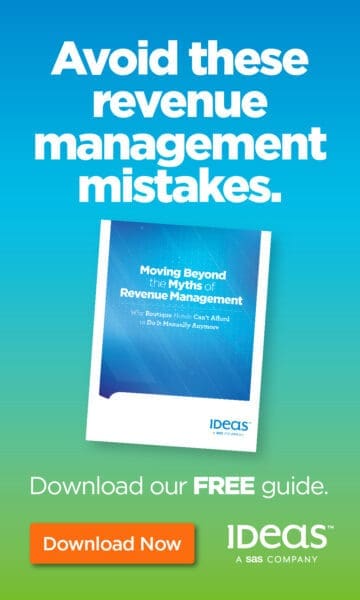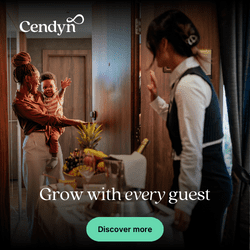 Although COVID-19 continues to disrupt the global hospitality & travel industry, there is at last light at the end of the tunnel for many regions. As hoteliers transition from survival to recovery mode, they must now reassess many of their demand generation and revenue optimisation strategies, including their competitive set tactics.
Although COVID-19 continues to disrupt the global hospitality & travel industry, there is at last light at the end of the tunnel for many regions. As hoteliers transition from survival to recovery mode, they must now reassess many of their demand generation and revenue optimisation strategies, including their competitive set tactics.
While determining the right comp set has always been crucial, it is vital to remain competitive now given our current uncertain market conditions. In order to define, or even redefine, your hotel’s comp set, here are some do’s and don’ts and other tips to help ensure a strong, competitive recovery ahead of returning market demand.
(Re)Defining your comp set
Put a hotel in your comp set that competes with your hotel in most of those segments, which are demand generators for your hotel. COVID-19 might have forced your hotel to reassess your comp set due to a switch in the business mix.
Have you seen an uptick in domestic travelers who are doing more travel by car than by airplane? How about staycations for guests in town who are looking for a change in scenery? Business travel doesn’t look like it used to, leading to shorter lengths of stay. Leisure travel has changed as well. There are spontaneous, last-minute trips with shorter booking windows as guests take advantage of final hour deals.
Consider the best alternative hotel property to yours from a guest perspective. You should have a hotel in your comp set that your guests could turn to if you have no rooms available to meet their needs. The same goes for the opposite. Partner with other hotels that can direct guests to you when they don’t have available inventory to meet the guest’s preferences.
Defining a proper comp set has always been vital to determine price positioning. Keep an eye on your competitors’ pricing. Look out for hotels making pricing actions, like increasing their corporate rate during the week or leisure rate on the weekends, that would force you to respond. It’s important to know how your own pricing compares, and what hotels near you are also forced to respond when you make a pricing action.
Look for a hotel with similar demand patterns year-round. Keep an eye out for whether its patterns are identical because it’s a competing brand. Maybe the patterns are similar because your hotel’s city has a conference or recurring event each year. It may even just be during a particular season that is an essential period for business. Having the right kind of revenue management system (RMS) can help you dive into the data to make sense of the demand patterns.
(Re)Calculating your commercial success
While understanding and ideally getting ahead of competitors is crucial, it’s also important to remember that in current circumstances, your biggest competitor is yourself. It’s working together as a unified commercial team in a constantly changing landscape. You and your team will ask how you did two weeks ago, and how you did last week, then forecast for the future.
Hotels should start competing with themselves to define strategies and commercial success. Benchmarking includes criteria such as:
Price: Use holistic data insights to see if your pricing makes sense not only against your current comp set but your future comp set to forecast for a future with goals you can realistically meet. Under or overpromising happens when we don’t have the right tools. While the right kind of RMS is not a crystal ball, it can help you make the most accurate and intelligent decisions.
Product: The best client service is no match for an outdated product. You can have the friendliest front desk, most resourceful concierge, and an eager sales team, but without a polished product, your hotel will struggle. Not every hotel will be a five-diamond property, and not every hotel should even attempt to strive for that. Each hotel has its own specialty, so it’s up to each hotel to be the best in its own category.
It can be as simple as making sure the walls have a fresh coat of paint. Get new plants to liven up the room or low-maintenance air plants to add trendy décor. If the furniture hasn’t been updated in several years, it could be time to refresh. When a hotel is low on occupancy, it’s an excellent time to evaluate the areas where a hotel’s product can be renewed.
Perception: Is the price you’re giving the guest in line with its value perception? As widespread vaccination efforts continue, guests will be more health- and safety-conscious than ever before. Clarify what reassurance, if any, guests will have that the hotel is clean and safe. What measures are being taken to ensure the impact from COVID-19 is kept to a minimum when guests choose a hotel?
These extra safety precautions do have a cost; however, guests are prepared to pay more when they can see the value—in this case the reassurance of safety and cleanliness. Consider whether these costs would be better to build into the existing room rate or as an extra charge. Depending on your target market, keep in mind at what point the cost might become unattractive for potential guests.
Experience: Your hotel should be providing guests a unique and memorable experience. It’s time to get creative. If you have a pet-friendly hotel, a furry hotel mascot with paws and a wagging tail may be a way to advertise that.
Whether your hotel is in a major city or small town, you can partner with local shops to sell out of your hotel and artists to add murals or bespoke pieces to your property. It helps support local businesses while giving your hotel a unique flavor. Guests will love taking photos of Instagrammable content like art they’ve never seen before or pieces exclusive to your property.
Distribution: Don’t overlook offline distribution channels, especially during these unprecedented times when customers might prefer to establish direct contact with you for reassurance of the hotel’s safety. It’s not just about making sure you have a friendly partnership with OTAs, travel agencies, and the guests who book while scrolling through their mobile phone. Keep in mind business coming in via phone call and e-mail, and make sure your RMS takes into account these offline leads coming in.
Recovering stronger
It is necessary to mirror any new comp set into your RMS and determine which ones will be relevant going forward. As tempting as it is, you’ll want to avoid ego-fueled competition. Reach for the stars, but don’t go beyond what makes sense for your hotel. If you’re a 4-star property with 100 rooms, it may not make sense to compare yourself to a 5-star hotel with dozens of meeting space options and hundreds of rooms with three times as many staff.
It’s not just about room size or hotel type, either. Geographical boundaries are not necessarily a key factor in determining a competitor. If you change your comp set and have an RMS, don’t forget to realign it. When you go shopping your comp set’s pricing, it will also influence the way you will be selling. Stay focused and don’t lose sight of your hotel’s unique goals.
About the author
Damiano Zennaro is a Principal Industry Consultant at IDeaS.





























